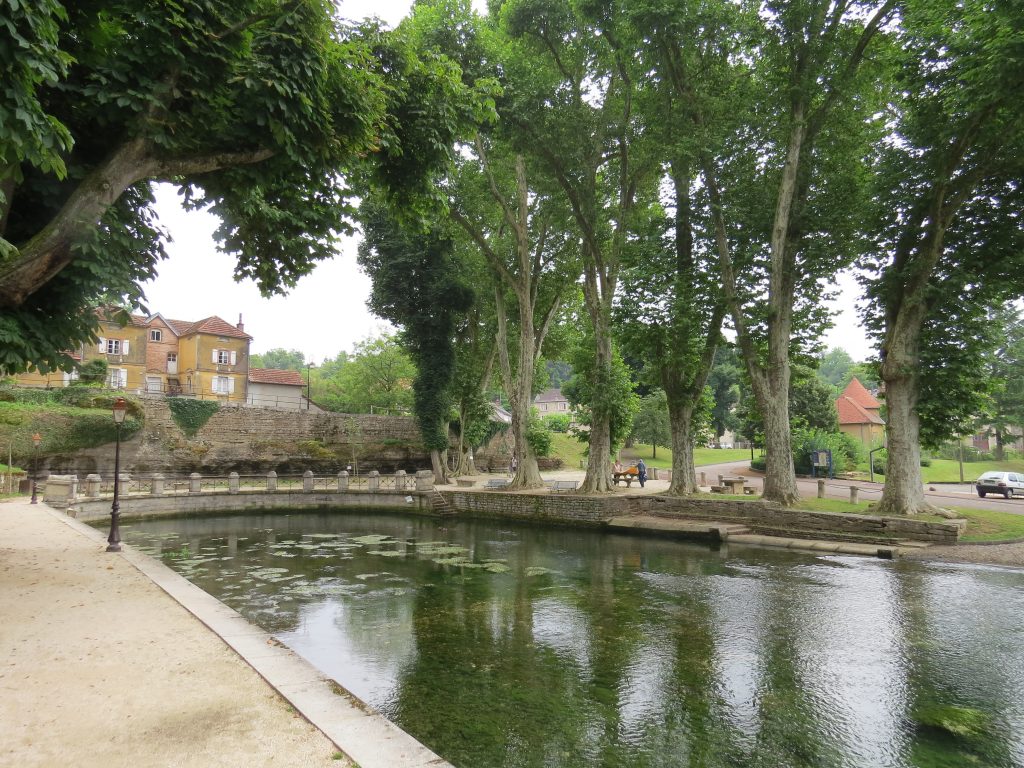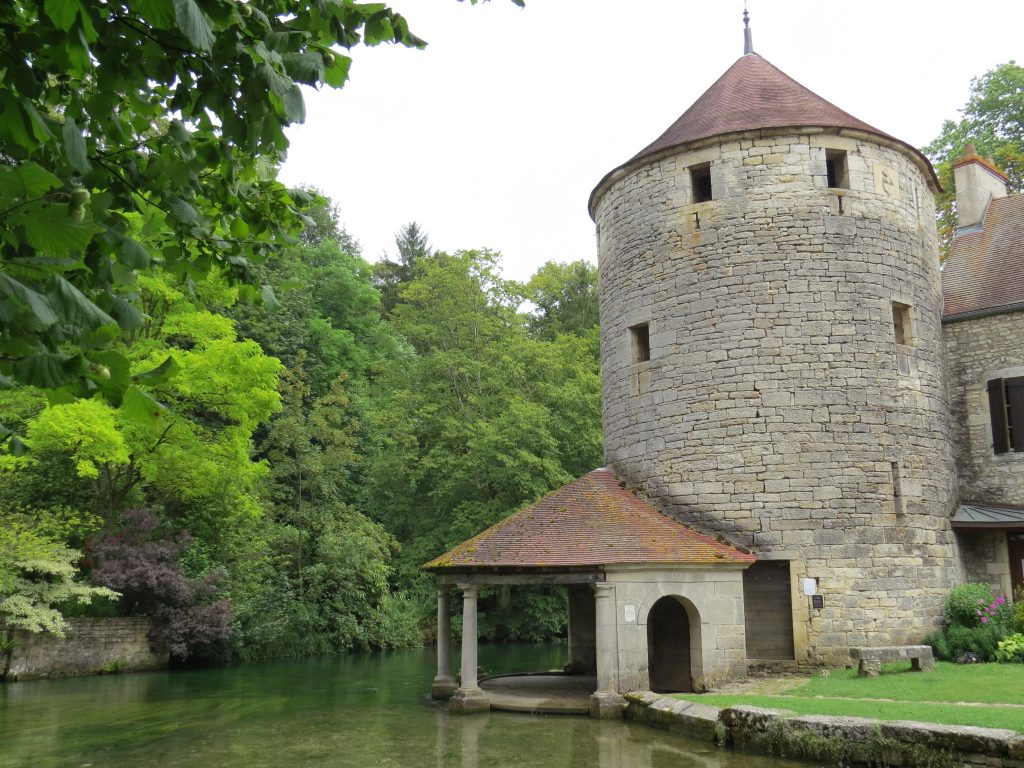Bèze…
…is a municipality in the department Côte-d’Or in the Burgundy region.
In 630, near the source of the river Bèze the Counts of Burgundy founded an abbey which has been completely rebuilt in the 17th century. Only the arcades in the park date from the 12th century. However, Bèze retained its medieval character. Several historic buildings, ruins of fortifications and winding streets invite you to stroll through the quiet village.

Location
The town is located about 30 kilometers south of Langres and about 30 kilometers northeast of Dijon.
Distance to our farm: about 38 km
Attractions
The limestone caves of Bèze are well worth seeing and can be visited via a 300 meter long underground river by boat. They can be visited daily from May to September and in April and October every weekend. The rest of the year they are impassable due to a high water level.
Near the caves is the source of the river Bèze. The promenade in front of the source is from the 18th century and is a listed building. The trees that line the promenade are between 250 and 300 years old.
The Tour des Francs is a guard tower from the 9th century and was part of the fortifications around the village in the Middle Ages. Unfortunately, it is nearly completely destroyed. It is called the “Tower of the Franks”, because during the Franco-German War of 1870/71 it was used for defense by French volunteer corps, called Francs-tireurs. Further towers of the fortifications are the Tour d’Oysel with the attached wash house of the nuns and the Tour des Chaux, which is named for its whitish coloration.
The Abbey of Bèze was one of the first to own a convent school. Initially it was only a school for the young monks, but later also for the children of the aristocrats. Over the centuries, the facade of the building changed several times, so that it reflects the architectural styles of different eras. In the 19th century, the building housed the “Hotel to the Old Monastery”, later it was used as a grocery store and bus stop. Until 1914 it was declared a national monument and preserved from demolition.
At the junction of road Dom Clément and the alley Saint Prudent you will see a pointed roof. Here was the altar area of the chapel of Saint-Prudent. This chapel was built between the 11th and 12th century, hosted the relics of Saint Prudent. During the time of the French Revolution, the building was sold as national property and converted into living space.
In 960, under the auspices of Bishop Remi, the chapel of the 7th century was rebuilt of the villagers to the Church of Saint-Rémi. A picture on a table inside the church bears witness to this event. Over the centuries, the church was repeatedly destroyed and rebuilt. Its last complete restoration was in 1995 and 1997.


